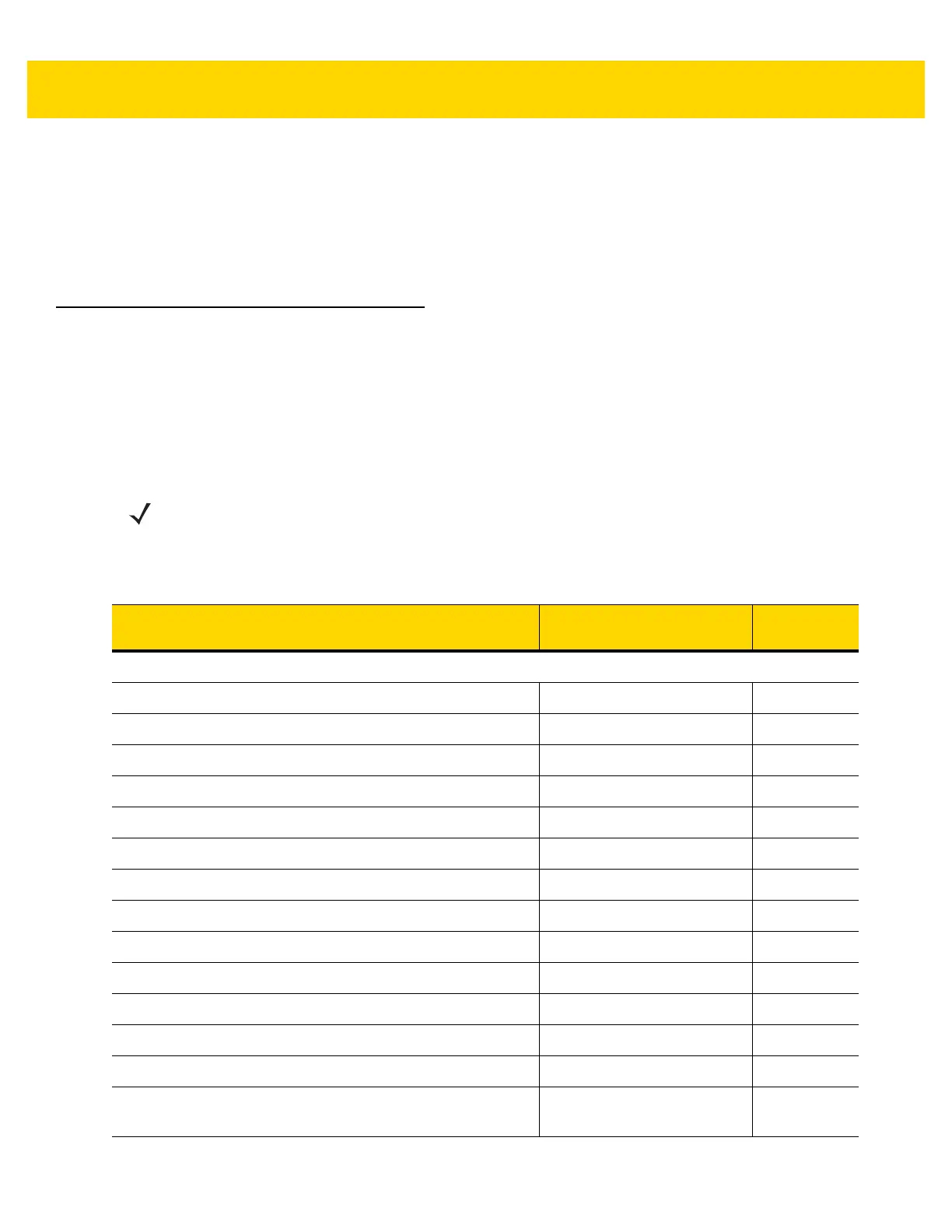RS-232 Interface 6 - 3
4. The scanner automatically detects the host interface type and uses the default setting. If the default (*) does
not meet your requirements, select another RS-232 host type by scanning the appropriate bar code from
RS-232 Host Types on page 6-6.
5. To modify any other parameter options, scan the appropriate bar codes in this chapter.
If problems occur with the system, see Troubleshooting on page 3-4.
RS-232 Parameter Defaults
Table 6-1 lists defaults for RS-232 host parameters. Change these values in one of two ways:
•
Scan the appropriate bar codes in this chapter. The new value replaces the standard default value in
memory. To recall default parameter values, see Default Parameters on page 9-5.
•
Configure the scanner using the 123Scan
configuration program. See Chapter 16, 123Scan and Software
Tools.
NOTE See Appendix A, Standard Parameter Defaults for all user preference, host, symbology, and
miscellaneous default parameters.
Table 6-1 RS-232 Interface Parameter Defaults
Parameter Default
Page
Number
RS-232 Host Parameters
RS-232 Host Types Standard
6-6
Baud Rate 9600
6-8
Parity None
6-9
Stop Bits 1 Stop Bit
6-10
Data Bits 8-bit
6-10
Check Receive Errors Enable
6-11
Hardware Handshaking None
6-11
Software Handshaking None
6-13
Host Serial Response Timeout 2 Sec
6-15
RTS Line State Low RTS
6-16
Beep on <BEL> Disable
6-16
Intercharacter Delay 0 msec
6-17
Nixdorf Beep/LED Options Normal Operation
6-18
Bar Codes with Unknown Characters Send Bar Code With
Unknown Characters
6-18
